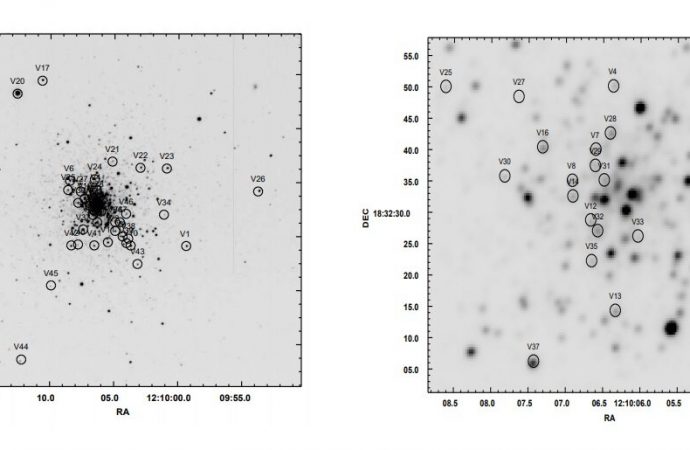Using the Devasthal optical telescope in India, astronomers have conducted photometric observations of the globular cluster NGC 4147. The observational campaign yielded the discovery of 28 new variable stars in this cluster. The findings are detailed in a paper published May 20 on the arXiv pre-print server.
Source: Phys.org
Many studies of variable stars in globular clusters (GCs) have been conducted to date. These studies show that about 70 percent of the known variables in globular clusters are of the RR Lyrae type. However, various observational techniques, including photometry, also allow astronomers to detect other types of variables in GCs. This could be crucial in advancing knowledge about the composition of globular clusters in general.
Recently, a team of researchers led by Sneh Lata of Aryabhatta Research Institute of Observational Sciences in India performed photometric observations of NGC 4147—a relatively small globular cluster located some 62,000 light years away. For this purpose they used a CCD imager mounted on the 3.6 m Devasthal optical telescope at Aryabhatta Research Institute of Observational Sciences, Nainital, India.
The observational campaign was fruitful as it resulted in the identification of 42 periodic variables in NGC 4147. From all of the identified variables, 28 turned out to be spotted for the first time. “We performed time series photometry of NGC 4147 in V and R bands, and identified 42 periodic variables in the region of NGC 4147, 28 of which have been detected for the first time,” the astronomers wrote in the paper.
According to the study, most of the newfound variables belong to the horizontal-branch (HB) and the red-giant branch (RGB). The results suggest that out the 28 new stars, seven are most likely RR Lyrae type c (RRc), eight were classified as eclipsing binary systems and Algol (Beta Persei)-type eclipsing systems, five was found to be W Ursae Majoris-type eclipsing variables, and one turned to be an SX Phe type variable.
“Based on the location in the V/(V − R) color magnitude diagram and variability characteristics, 7, 8, 5 and 1 newly identified probable member variables are classified as RRc, EA/E, EW and SX Phe, respectively,” the paper reads. Therefore, the research leaves seven new variables unclassified. Further spectroscopic observations of NGC 4147 should allow astronomers determine the nature of these stars.
Besides the detection of new variables, the study also provided important insights about the subclass of NGC 4147. The results, based on metallicity estimated from light curves of variable stars, indicate that it is an Oosterhoff type II cluster. Moreover, new observations suggest that NGC 4147 is located closer than previously thought. New distance estimates show that the cluster is around 56,000 light years away from Earth.

































Leave a Comment
You must be logged in to post a comment.